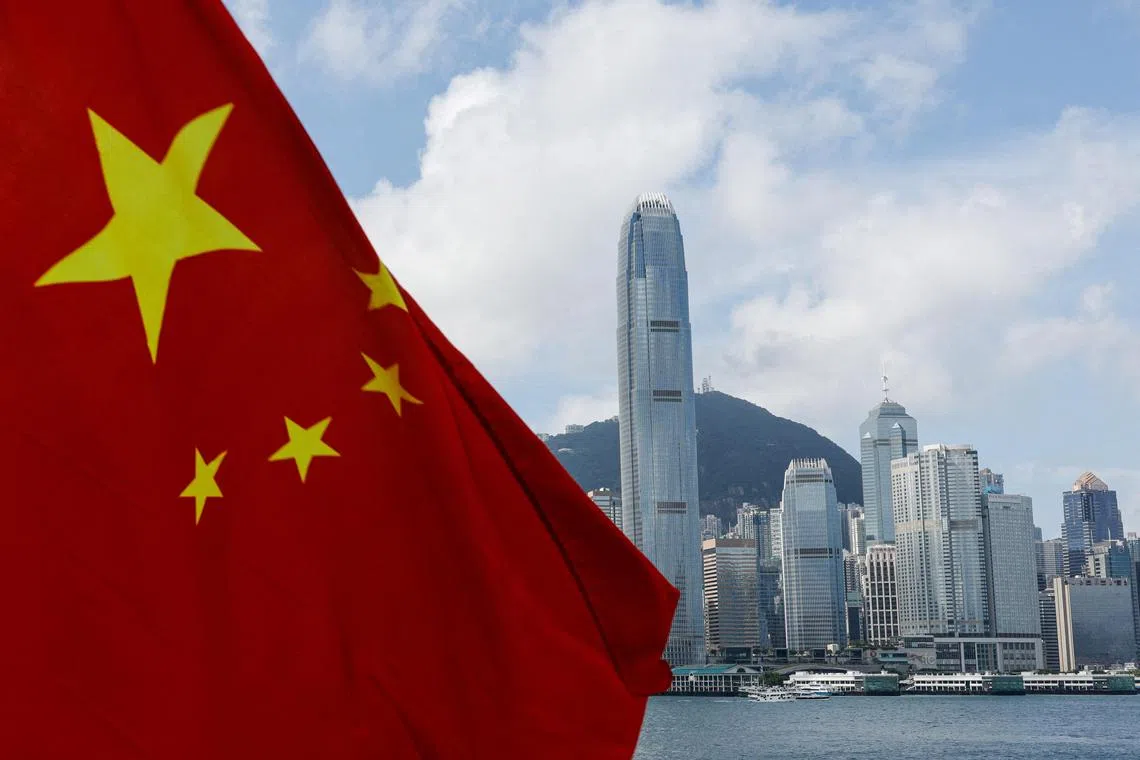China sets sights on cornering another green energy market – hydrogen
Sign up now: Get ST's newsletters delivered to your inbox

Chinese electrolysers are not as efficient as those made in the US and Europe, but they cost far less.
PHOTO: REUTERS
Follow topic:
San Francisco – A decade ago, China used low prices to dominate solar manufacturing, wiping out Western competitors just as worldwide demand for panels started to soar. The United States and Europe are determined not to let the same thing happen with hydrogen.
As the world sprints to decarbonise, the next round of competition revolves around a device called an electrolyser. Plug such devices into clean electricity such as solar power, and it is possible to extract hydrogen from water without producing any planet-warming emissions. This is a crucial step in creating a green fuel capable of decarbonising industries such as steel, cement or shipping.
Companies around the world are already revving up electrolyser production, green hydrogen plants are under construction, and the industry is finally making the leap from pilot projects to industrial scale.
BloombergNEF (BNEF), a clean energy research group, estimates that worldwide electrolyser production will need to grow 91 times by 2030 to meet demand. But many Western clean tech veterans eye the emerging competition with a queasy feeling of deja vu. More than 40 per cent of all electrolysers made today come from China, according to BNEF.
Chinese electrolysers are not as efficient as those made in the US and Europe, but they cost far less – about a quarter of what Western companies charge. Chinese electrolyser companies still largely serve their domestic market, but they are starting to expand sales overseas.
“I have heard too many government officials say we cannot repeat the experience of solar again,” said BNEF hydrogen analyst Wang Xiaoting.
President Joe Biden served as vice-president during the crucial years when China seized the lead in solar manufacturing. Now he views China as a competitor more than a supplier, and he has made bringing clean tech manufacturing back to the US a pillar of his climate policies. The US is determined not to let China control this new energy boom, and Mr Biden’s Inflation Reduction Act showers money on domestic hydrogen production.
Europe has its own reasons for wanting a piece of this nascent industry.
Russia’s invasion of Ukraine
“I am scared the market shares in the electrolyser business will be taken away from Europe and shipped to other geographies,” said Mr Jorgo Chatzimarkakis, chief executive officer of the Brussels-based lobbying group Hydrogen Europe. “The EU is shooting itself in the head. Not in the foot – in the head.”
Meanwhile, many analysts expect the efficiency of Chinese electrolysers to improve, eroding any technological advantage the US and European companies now have.
Some Chinese companies have had a head start. Chemical equipment manufacturers there have made electrolysers for years, installing large-scale water electrolysis systems for various manufacturing industries such as polysilicon production for solar cells.
Electrolysers use electricity to split water into hydrogen and oxygen, and versions of them have been on the market since the 1920s. Many countries now see hydrogen as the best bet for decarbonising industries that cannot easily run on electricity. If an electrolyser’s power comes from a solar or wind facility, or a nuclear reactor, the process of producing the hydrogen is also carbon-free.
The devices come in several varieties, each with its pros and cons. Chinese companies mostly produce alkaline electrolysers that have low upfront costs but need more electricity than competing technologies to yield each kilogram of hydrogen. US and European companies focus on solid oxide and proton-exchange membrane (PEM) electrolysers that have a higher initial cost but need less electricity – a big selling point in places where electricity is expensive.
Chinese manufacturers, however, are developing PEM electrolysers and refining their alkaline products, and they are eyeing foreign markets for growth.
Longi Green Energy Technology, the world’s largest solar equipment maker, set up a hydrogen unit in March 2021 and has already built 1.5 gigawatts of electrolyser manufacturing capacity in China. It is developing PEM but predicts that alkaline electrolysers will dominate the industry for the next five years, said Mr Wang Yingge, vice-president of Longi Hydrogen. Within three years, the company expects foreign markets to make up more than half of its sales, he said.
“Europe and the US have the most proactive incentive policies for the hydrogen industry, while the Middle East and Africa have the largest scale and most economical renewable energy,” Mr Wang said. “Green hydrogen projects in these regions have good profitability.” BLOOMBERG

